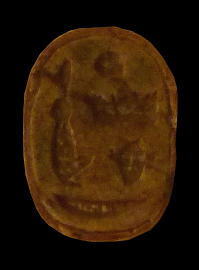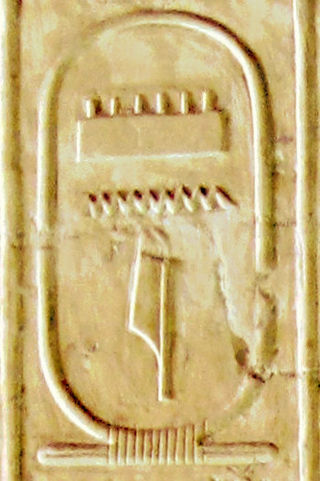
Menes was a pharaoh of the Early Dynastic Period of ancient Egypt credited by classical tradition with having united Upper and Lower Egypt and as the founder of the First Dynasty.
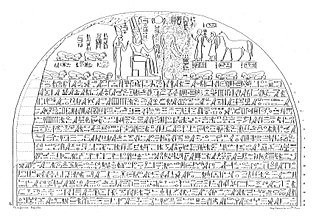
Piye was an ancient Kushite king and founder of the Twenty-fifth Dynasty of Egypt, who ruled Egypt from 744–714 BC. He ruled from the city of Napata, located deep in Nubia, modern-day Sudan.
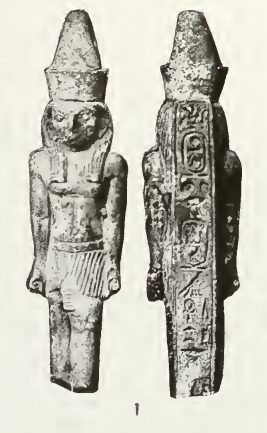
Menkheperre Necho I was a ruler of the ancient Egyptian city of Sais. He was the first securely attested local Saite king of the 26th Dynasty of Egypt who reigned for 8 years (672–664 BCE) according to Manetho's Aegyptiaca. Egypt was reunified by his son Psamtik I.

Neferkare Shabaka, or Shabako was the third Kushite pharaoh of the Twenty-fifth Dynasty of Egypt, who reigned from 705 to 690 BC. The Greek sources called him Sabacon (Σαβακῶν) and is mentioned by both Herodotus and Manetho.

The Third Intermediate Period of ancient Egypt began with the death of Pharaoh Ramesses XI in 1077 BC, which ended the New Kingdom, and was eventually followed by the Late Period. Various points are offered as the beginning for the latter era, though it is most often regarded as dating from the foundation of the Twenty-Sixth Dynasty by Psamtik I in 664 BC, following the departure of the Nubian Kushite rulers of the Twenty-fifth Dynasty after they were driven out by the Assyrians under King Ashurbanipal. The use of the term "Third Intermediate Period", based on the analogy of the well-known First and Second Intermediate Periods, was popular by 1978, when British Egyptologist Kenneth Kitchen used the term for the title of his book on the period. While Kitchen argued that the period was 'far from being chaotic' and hoped that his work would lead to the abolishment of the term, with his own preference being the 'Post-Imperial epoch', his use of the term as a title seems only to have entrenched the use of the term.

Shebitku also known as Shabataka or Shebitqo, and anglicized as Sethos, was the second pharaoh of the Twenty-fifth Dynasty of Egypt who ruled from 714 BC – 705 BC, according to the most recent academic research. He was a son of Piye, the founder of this dynasty. Shebitku's prenomen or throne name, Djedkare, means "Enduring is the Soul of Re." Shebitku's queen was Arty, who was a daughter of king Piye, according to a fragment of statue JE 49157 of the High Priest of Amun Haremakhet, son of Shabaka, found in the temple of the Goddess Mut in Karnak.

Shepsesre Tefnakht was a prince of Sais and founder of the relatively short Twenty-fourth Dynasty of Egypt; he rose to become a Chief of the Ma in his home city. He is thought to have reigned roughly 732 BCE to 725 BCE, or seven years. Tefnakht I first began his career as the "Great Chief of the West" and Prince of Sais and was a late contemporary of the last ruler of the 22nd Dynasty: Shoshenq V. Tefnakht I was actually the second ruler of Sais; he was preceded by Osorkon C, who is attested by several documents mentioning him as this city's Chief of the Ma and Army Leader, according to Kenneth Kitchen, while his predecessor as Great Chief of the West was a man named Ankhhor. A recently discovered statue, dedicated by Tefnakht I to Amun-Re, reveals important details about his personal origins. The statue's text states that Tefnakht was the son of a certain Gemnefsutkapu and the grandson of Basa, a priest of Amun near Sais. Consequently, Tefnakht was not actually descended from either lines of Chiefs of the Ma and of the Libu as traditionally believed but rather came from a family of priests, and his ancestors being more likely Egyptians rather than Libyans.
Almost nothing is known of Nekauba. He is listed as one of the early kings of the 26th Saite Dynasty in Manetho's Epitome and ruled for six years. However, his status as king is not confirmed by any contemporary documents and he may well be an invention of later Saite rulers to legitimise their kingship. Manetho writes that Nekauba is supposed to have succeeded Stephinates the founder of the 26th Dynasty—perhaps Tefnakht II—and was, in turn, followed by the well known Necho I, father of Psamtik I. Nekauba would have reigned as a local Saite king under the Nubian Dynasty between 678 BC to 672 BC if he did have an independent reign. If not, he would merely have been a local mayor of Sais who served in office for this period of time prior to the accession of king Necho I.

Usermaatre Setepenamun Takelot III Si-Ese was Osorkon III's eldest son and successor. Takelot III ruled the first five years of his reign in a coregency with his father, according to the evidence from Nile Quay Text No.13, and succeeded his father as king the following year. He served previously as the High Priest of Amun at Thebes. He was previously thought to have ruled Egypt for only 7 years until his 13th Year was found on a stela from Ahmeida in the Dakhla Oasis in 2005.
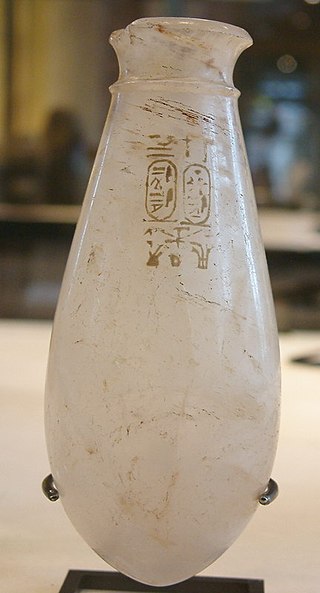
Rudamun was the final pharaoh of the Twenty-third Dynasty of Egypt. His titulary simply reads as Usermaatre Setepenamun, Rudamun Meryamun, and excludes the Si-Ese or Netjer-Heqawaset epithets employed by his father and brother.

Maaibre Sheshi was a ruler of areas of Egypt during the Second Intermediate Period. The dynasty, chronological position, duration and extent of his reign are uncertain and subject to ongoing debate. The difficulty of identification is mirrored by problems in determining events from the end of the Middle Kingdom to the arrival of the Hyksos in Egypt. Nonetheless, Sheshi is, in terms of the number of artifacts attributed to him, the best-attested king of the period spanning the end of the Middle Kingdom and the Second Intermediate period; roughly from c. 1800 BC until 1550 BC. Hundreds of scaraboid seals bearing his name have been found throughout the Levant, Egypt, Nubia, and as far away as Carthage, where some were still in use 1,500 years after his death.

Usermaatre Osorkon IV was an ancient Egyptian pharaoh during the late Third Intermediate Period. Traditionally considered the last king of the 22nd Dynasty, he was de facto little more than ruler in Tanis and Bubastis, in Lower Egypt. He is generally – though not universally – identified with the King Shilkanni mentioned by Assyrian sources, and with the biblical So, King of Egypt mentioned in the second Books of Kings (17:4).

The Twenty-fourth Dynasty of Egypt is usually classified as the fourth Dynasty of the Ancient Egyptian Third Intermediate Period.

The Twenty-fifth Dynasty of Egypt, also known as the Nubian Dynasty, the Kushite Empire, the Black Pharaohs, or the Napatans, after their capital Napata, was the last dynasty of the Third Intermediate Period of Egypt that occurred after the Nubian invasion.

Nimlot was an ancient Egyptian ruler ("king") of Hermopolis during the 25th Dynasty.
Ammeris was a governor of Sais attributed to the so-called "Proto-Saite Dynasty" of ancient Egypt.

The Twenty-sixth Dynasty of Egypt dynasty was the last native dynasty to rule Egypt before the Persian conquest in 525 BC. The dynasty's reign is also called the Saite Period after the city of Sais, where its pharaohs had their capital, and marks the beginning of the Late Period of ancient Egypt.
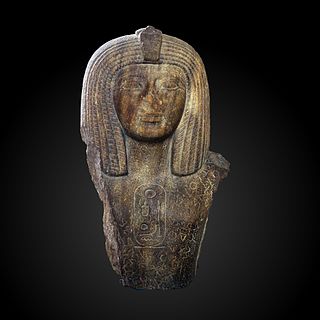
Pi-Sekhemkheperre or Per-Sekhemkheperre, was an ancient Egyptian stronghold. Its name means "The estate of Sekhemkheperre", a reference to Sekhemkheperre Osorkon I, the pharaoh of the early 22nd Dynasty who founded the fortress during his reign. It has been suggested that its erection may be a symptom of the state of general insecurity in the country during the period.
Pi-Sekhemkheperre is at yet undiscovered but it is believed that it lies somewhere at the entrance of the Faiyum, just north to Herakleopolis Magna in Middle Egypt.

Yanassi was a Hyksos prince, and possibly king, of the Fifteenth Dynasty. He was the eldest son of the pharaoh Khyan, and possibly the crown prince, designated to be Khyan's successor. He may have succeeded his father, thereby giving rise to the mention of a king "Iannas" in Manetho's Aegyptiaca, who, improbably, was said to have ruled after the pharaoh Apophis.
